by Judith Vallette // Dec. 4, 2020
Self-described as a strong network of artists and art mediators eager to counter mainstream ableist narratives and work towards inclusivity in arts and culture, Berlinklusion organizes a myriad of events and workshops and offers consulting to a number of art institution clients on how to achieve holistic accessibility. With their extensive network of artists passionate and involved in disability arts, Berlinklusion provides structural advice for cultural institutions through evaluations of accessibility and creates programming to foreground inclusivity. They also hold their own events, often in collaboration with other Berlin arts organizations, including exhibitions, curatorial projects and a recurring ‘Disability Art Meetup’ event, which hosts presenters and provides a space to foster collaboration. We spoke with Kate Brehme of Berlinklusion about what the term “inclusion” means for the group and how the current pandemic has highlighted institutional gaps in access that have long affected disabled communities.
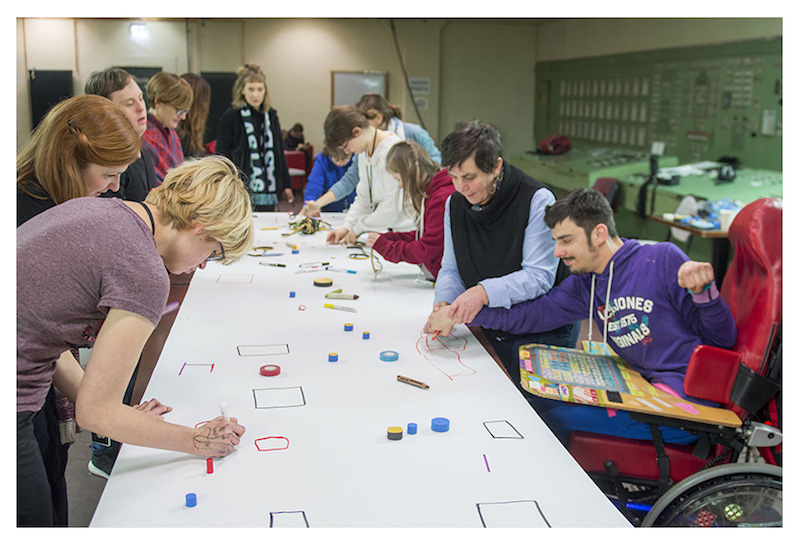
Berlinklusion workshop // Photo by J.Scheer, courtesy of Berlinklusion
Judith Vallette: What is Berlinklusion’s origin story?
Kate Brehme: My colleagues Dirk Sorge, Jovana Komnenic, Kirstin Broussard and I had all been working in the arts for a while and were getting really frustrated with the state of affairs in Germany and how inaccessible a lot of mainstream contemporary arts and culture is. We felt like there was a real lack of awareness around issues such as access or lack of inclusion in the arts. We all had ideas of how inclusion could be done differently and proactively in contemporary arts and culture. It was through working together as freelancers that we realized we all were sick and tired of bashing our heads against the wall all the time and waiting for other people to change things, to make the arts more inclusive and accessible. We realized we had this combined amazing network of people we worked with over the years: all of these contacts in the art sector with the same goal of increased access and inclusion that we could and wanted to work with in the future.
JV: What does the term “inclusion” mean to you? Is there an intersectional outlook for Berlinklusion: Do you try to have more diverse representations beyond ability?
KB: We have quite a broad definition of inclusion and disability. For us, disability is defined by the individual through lived experience. It is a really broad term that can be used as a form of empowerment but also recognizes the boundaries people with disabilities face. We are a mixed group of people with and without disabilities, so what’s important for us is that, as part of the inclusion process, people with disabilities are the ones making decisions based on their lived experiences, on their disabilities and on the barriers they face. Inclusion is the process of dismantling those barriers. I think it’s important for a lot of art institutions that inclusion isn’t seen as something that you do and it’s done but, rather as a process that you constantly have to work on. I would apply this to us as well: we do try hard to work with as diverse a group of people as possible. Our network is an expanding network and we are constantly looking for ways to include other marginalized voices in what we do. It’s challenging work. When we start projects we think really hard about who we can share our privilege with.
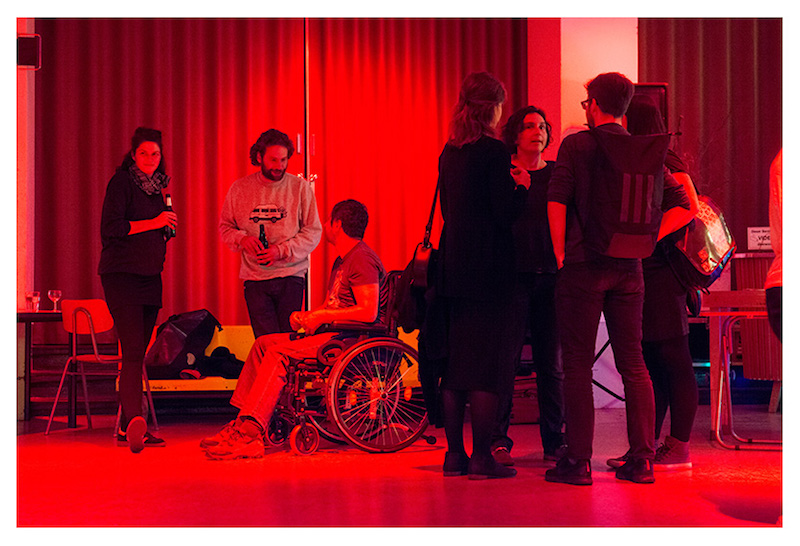
Berlinklusion ‘Disability Art Meetup’ // Photo by J.Scheer, courtesy of Berlinklusion
JV: How does Berlinklusion choose which organizations and artists to collaborate with?
KB: It actually often works the other way around. In the last couple of years, there’s been lots of demand from arts organizations that have reached out to us asking for advice on how to be more inclusive and accessible. There is a large gap in organizations specializing in access and inclusion issues that also have experience working in the arts as cultural workers. We’ve worked in arts institutions, as freelance artists and art educators, so we have a nice mixture of being on both sides of the fence. We and our network also have lived experiences of disability. When we get inquiries, usually, the first thing we do is ask what inclusion means to them, to see if we’re on the same page. We also want organizations to understand our holistic approach to access as not simply in terms of a physical building, but also symbolically and structurally. There’s no point doing the hard work if they are not willing to hire artists with disabilities or support them with the right access measures, so that they can make work and be represented by that institution. We do get a lot of requests from individual artists who want to work with us. We are always eager to find out what they want to do. Yet, it is difficult in this city as a small arts collective to get funding for such projects.
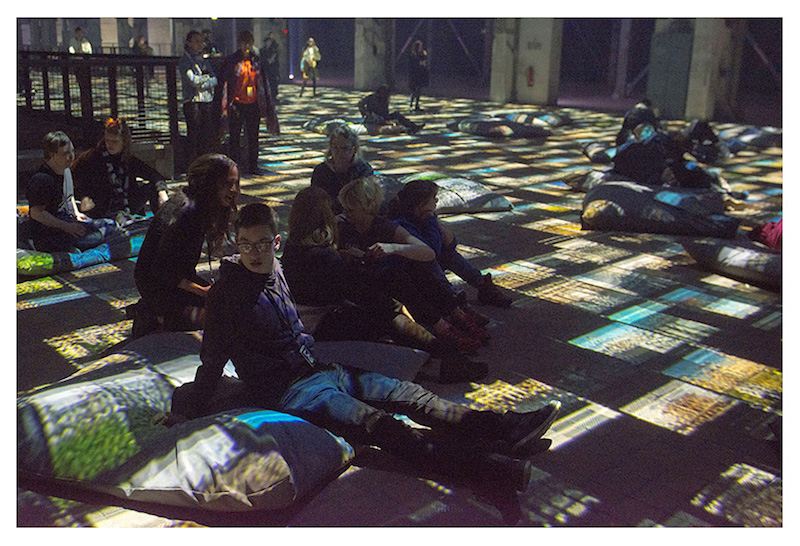
Inclusive workshops with Light Art Space, 2019 // Photo by J.Scheer, courtesy of Berlinklusion
JV: What are some of the gaps you see in Berlin’s cultural institutions in terms of ableism/accessibility and how will your organization address them going forward?
KB: It’s unfortunate that there are so many ways that ableism manifests in our arts and cultural sphere. I think a lot comes from ignorance—a complete lack of awareness—but also structural problems. Just as there is institutional racism, you have institutional ableism. A classic example is not having anyone who works in a position of power for your arts institution who has a disability, or putting access and disability on the agenda for that institution.
In addition, the structures of those working environments are not very accessible to people with disabilities. There is also a lack of funding bodies for people with disabilities to get the support that they need in order to make their work, like training programs, professional development, grants. A lot of it is lack of understanding or awareness, but ignorance is not an excuse. There are fantastic examples in other countries of how this can work so much better and I think it’s really time that the art sector in Berlin and, dare I say, Germany, look at what other countries are doing and how they are funding institutions and individual artists.
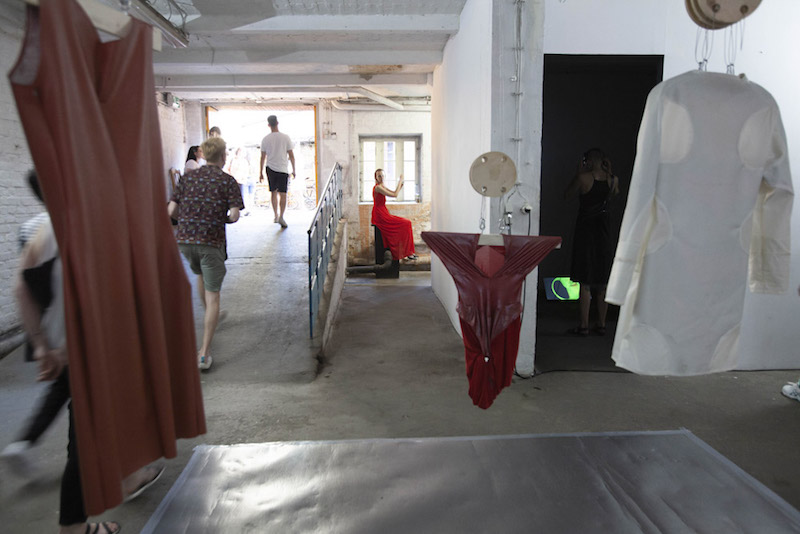
Installation view, Group exhibition ‘Deformation Complete: Die Freiheit eines Bratenwenders’ as part of 48h Neukölln 2019 // Photo by Minhye Chu, Courtesy of Berlinklusion
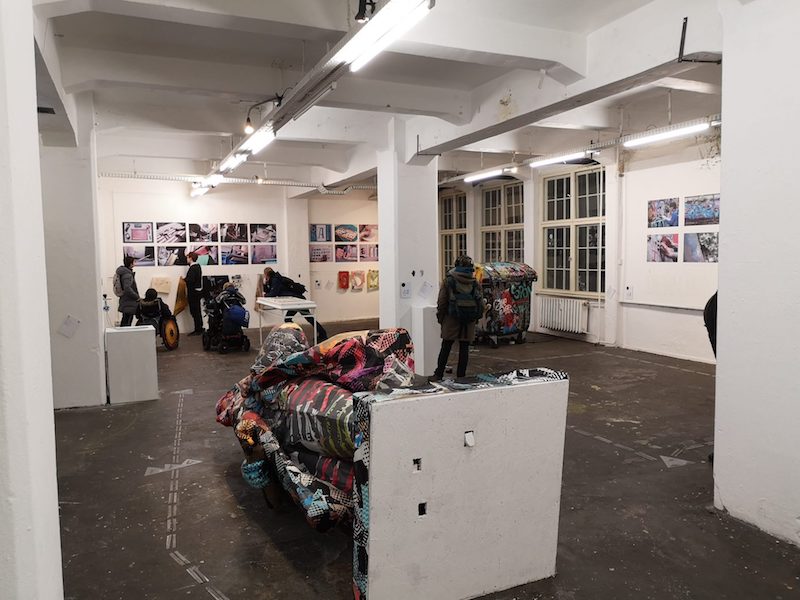
Installation view of ‘Denk.mal Inklusiv & Keine Ewigkeit für Niemand’ at Neurotitan Gallery, 2019 // Photo by Kate Brehme
JV: How has the current pandemic affected your work with (potentially) more vulnerable populations and in what ways have you been able to reorient your practice as a result?
KB: It has affected us and people we work with, as many people with disabilities are in the high-risk group for Covid-19. We have, out of solidarity for people in our network, reduced contact with other people and changed the way in which we do things. For example, we have shifted the ‘Disability Art Meetup’ events to be online. We’ve had to go through a process of asking people we work with what their needs are now due to Covid, to pass this information to clients. It’s interesting to see how most of these issues didn’t even occur to them [the clients]. It really highlights the gap between those that have the privilege of not having to think about issues of access on the daily versus those who do. It’s been a real eye-opener.
We’ve also lost quite a lot of work because of the pandemic. At the end of the day, we are still freelancers and Covid has hit us pretty hard. Thankfully, we’ve had some projects that have continued, which we’ve been able to pass on to people in our network. It is only now that mainstream organizations have been taking measures that people with disabilities have been arguing for for decades. Covid has really forced a lot of institutions to think outside of the box. My big fear is that things will go back to normal and that the assumption will be that just because the doors are open, everyone will come back. Not everybody was there in the first place! That’s something really important for art institutions to remember.
This article is part of our feature topic of ‘Accessibility.’ To read more from this topic, click here.






















